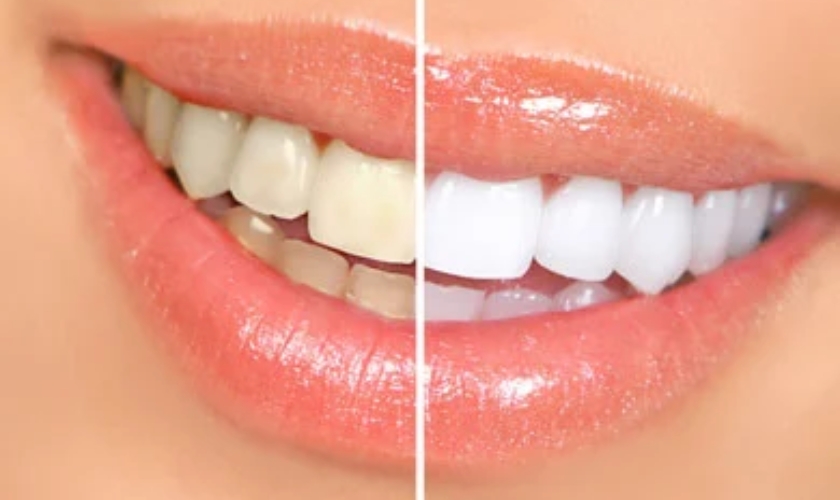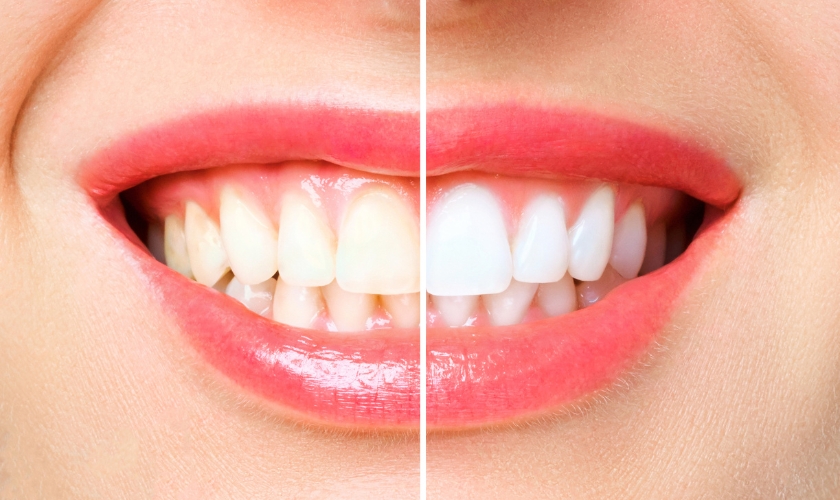
Should I Brush My Teeth After Using Whitening Strips
Hey there, fellow dental enthusiasts! Are you dreaming of a dazzling white smile that can light up a room? Well, look no further than teeth whitening strips. These magical little wonders have become increasingly popular for their ability to brighten your pearly whites from the comfort of your own home. But before you dive headfirst into this journey towards a megawatt smile, one question may be lingering in your mind: should I brush my teeth after using whitening strips? Fear not, because we’re here to guide you through all the ins and outs of this toothy topic. So grab your toothbrush and let’s get started!
What Are Teeth Whitening Strips?
- Teeth whitening strips have become increasingly popular in recent years as a convenient and affordable way to achieve a brighter smile. But what exactly are these magical strips? Well, they are thin, flexible pieces of plastic coated with a layer of peroxide-based gel. The gel contains bleaching agents that work to break down stains on the surface of your teeth.
- One of the great things about teeth whitening strips is their simplicity. They are easy to use and can be applied at home without any professional assistance. All you need to do is peel off the strip from its backing, place it onto your teeth, and gently press it into place. Then you just wait for the recommended amount of time before removing them.
- The active ingredients in these strips penetrate deep into the enamel and target stubborn stains caused by coffee, tea, smoking, or ageing. Over time and with consistent use, you can expect noticeable results.
- It’s important to note that not all teeth whitening strips are created equal. Some brands may contain higher concentrations of bleaching agents than others, so it’s crucial to follow the instructions provided by the manufacturer carefully.
- In terms of safety concerns, many people wonder if brushing their teeth immediately after using whitening strips is necessary or even advisable.
How Do Teeth Whitening Strips Work?
- Teeth whitening strips have become a popular option for those seeking a brighter, whiter smile. But how exactly do these strips work their magic? Let’s delve into the science behind it.
- Teeth whitening strips usually contain a peroxide-based gel, which is the key ingredient responsible for removing stains and discolouration from your teeth. When you apply the strip to your teeth, this gel comes into contact with the enamel surface.
- Once on your teeth, the peroxide in the gel breaks down into oxygen molecules. These molecules then penetrate through the pores of your enamel and reach deep into your tooth structure. They target and break apart the chemical bonds that hold together stain particles on your teeth.
- As these bonds are broken, stains start to fade away, revealing a whiter and brighter smile. The longer you leave the strips on (as indicated by product instructions), the more time these oxygen molecules have to work their way through stubborn stains.
- It’s important to note that while teeth whitening strips can effectively remove surface stains, they may not be as effective against intrinsic or deep-rooted discolouration caused by factors like genetics or medication.
Potential Side Effects of Teeth Whitening Strips
- While teeth whitening strips can effectively brighten your smile, it’s important to be aware of potential side effects. One common side effect is tooth sensitivity. The bleach in the whitening strips can irritate the nerves within your teeth, causing temporary sensitivity to hot and cold temperatures.
- Another possible side effect is gum irritation. Some individuals may experience redness, inflammation, or soreness in their gums after using whitening strips. This usually occurs if the strips come into contact with the gums during application.
- In rare cases, individuals may also experience uneven whitening or white spots on their teeth. This can happen if the whitening gel on the strip comes into contact with a specific area for too long and causes excessive bleaching.
- It’s worth noting that these side effects are usually temporary and subside once you stop using the whitening strips. However, it’s always best to consult with your dentist before starting any teeth whitening treatment to ensure it’s suitable for you.
- Remember to follow instructions carefully when using teeth whitening strips and avoid leaving them on for longer than recommended. If you do experience any persistent discomfort or unusual symptoms while using these products, discontinue use immediately and seek professional advice from your dentist.
Should You Brush Your Teeth After Using Whitening Strips?
- After using whitening strips, many people wonder if they should brush their teeth immediately afterwards. While it may seem logical to remove any residue or potential staining from the strips, it’s important to understand the possible effects of brushing too soon.
- It’s essential to follow the instructions provided with your specific brand of whitening strips. Some manufacturers recommend waiting a certain amount of time before brushing. This is because the whitening process can temporarily weaken tooth enamel, and brushing immediately after could potentially cause damage.
- Furthermore, brushing right after using whitening strips may also be abrasive on your teeth and gums. The chemicals in the whitening strips can make your teeth more sensitive during and shortly after treatment. Brushing vigorously could worsen this sensitivity and even lead to discomfort.
- Instead of rushing to brush your teeth immediately after using whitening strips, consider rinsing your mouth thoroughly with water instead. This will help remove any excess gel or residue without causing harm to your enamel or irritating sensitive areas.
- While there is no one-size-fits-all answer for whether you should brush your teeth after using whitening strips, it’s generally recommended to wait a little while before doing so. Always consult the instructions provided by the manufacturer and take into account any sensitivities you may have. Remember that oral hygiene practices vary for each individual, so find what works best for you!
Conclusion
Teeth whitening strips can be an effective and convenient way to achieve a brighter smile. However, it’s important to understand how they work and consider the potential side effects before incorporating them into your oral care routine.
Teeth whitening strips are thin, flexible pieces of plastic coated with a bleaching agent. They work by applying this gel-like substance directly onto the surface of your teeth. The active ingredients in the gel penetrate the enamel to break down stains and discolouration, revealing whiter teeth over time.



